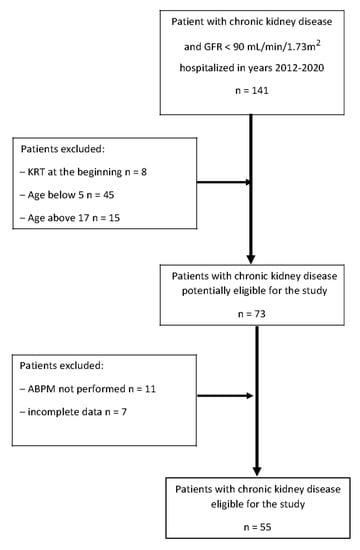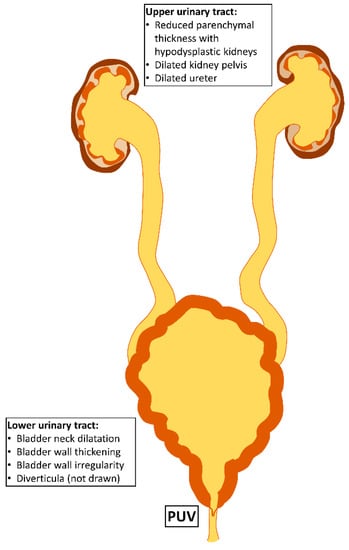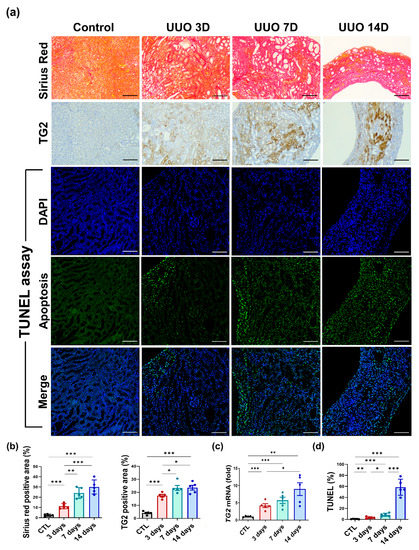Progression of Chronic Kidney Disease
A topical collection in Biomedicines (ISSN 2227-9059). This collection belongs to the section "Molecular and Translational Medicine".
Viewed by 9595Editor
Interests: clinical nephrology; renal disease; nephrology urinary; infections; nephrotic syndrome; pediatric nephrology
Special Issues, Collections and Topics in MDPI journals
Topical Collection Information
Dear Colleagues,
Any congenital or acquired renal damage to the kidneys that is persistent is considered a Chronic Kidney Disease (CKD). Chronic Kidney Disease (CKD) has a high prevalence; it is estimated that 10% of an adult population in developed countries have some kidney damage. Kidney damage is progressive and, eventually, leads to end-stage renal disease (ESRD). Patients with ESRD need dialysis or kidney transplantation to live; these treatments are expensive and often to not enable a normal life.
Renal function is usually determined by the measurement of the Glomerular Filtration Rate (GFR), which is the amount of blood which is filtered by the kidney. The renal tubules have an important role in producing urine, reabsorbing and secreting several substances. Furthermore, the kidneys produce renin, vitamin D, erythropoietin, and Klotho protein, which control vascular wall integrity, erythropoiesis and bone composition. Nevertheless, according to Bricker’s hypothesis of the intact nephron, the renal function depends on the number of nephrons. Residual nephrons may compensate the loss or the congenital reduction in number, increasing the individual GFR. The increase in GFR is called the “renal reserve”, which is difficult to measure. According to Brenner’s hypothesis, this causes hyperfiltration, leading to irreversible damage to the glomeruli and eventually end-stage renal disease (ESRD). A recent classification of the stages of CKD takes into consideration the GFR and the proteinuria, which is probably a measure of the hyperfiltration. The progression to End-Stage Renal Disease (ESRD) is variable according to the cause of renal disease (glomerular diseases produce a faster decline in renal function compared to interstitial diseases); many factors are thought to be involved (high sodium, phosphate or protein consumption in the diet, high blood pressure, drugs, etc.). A low-protein diet, ACE inhibitors, nonsteroidal mineralocorticoid receptor antagonists, and SGLT2 inhibitors may reduce the progression to ESRD. The early introduction of treatment is important in reducing CKD progression. Unfortunately, the diagnosis of renal insufficiency is often late. A considerable percentage of patients with ESRD do not receive a diagnosis. Congenital Abnormalities of the Kidney and Urinary Tract (CAKUT) may be neglected and affected children reach ESRD in adulthood. A considerable percentage of patients who receive a kidney transplant develop a renal insufficiency. Several factors may contribute to this: immunosuppressive therapy, other drugs, hypertension, recurrence of the renal disease, etc. Premature and low-weight new-borns are prone to developing kidney disease in their lives. Patients who suffer from acute kidney injury may recover but a percentage will develop CKD later in their life.
Collecting original works in a topic collection of a journal gives researchers the opportunity to learn, share ideas, and participate in collaborative studies. Original papers dealing with the definition, causes, diagnosis, evaluation, and treatment of renal disease are welcome.
Dr. Silvio Maringhini
Collection Editor
Manuscript Submission Information
Manuscripts should be submitted online at www.mdpi.com by registering and logging in to this website. Once you are registered, click here to go to the submission form. Manuscripts can be submitted until the deadline. All submissions that pass pre-check are peer-reviewed. Accepted papers will be published continuously in the journal (as soon as accepted) and will be listed together on the collection website. Research articles, review articles as well as short communications are invited. For planned papers, a title and short abstract (about 100 words) can be sent to the Editorial Office for announcement on this website.
Submitted manuscripts should not have been published previously, nor be under consideration for publication elsewhere (except conference proceedings papers). All manuscripts are thoroughly refereed through a single-blind peer-review process. A guide for authors and other relevant information for submission of manuscripts is available on the Instructions for Authors page. Biomedicines is an international peer-reviewed open access monthly journal published by MDPI.
Please visit the Instructions for Authors page before submitting a manuscript. The Article Processing Charge (APC) for publication in this open access journal is 2600 CHF (Swiss Francs). Submitted papers should be well formatted and use good English. Authors may use MDPI's English editing service prior to publication or during author revisions.
Keywords
- evaluation of renal functions
- evaluation of kidney damage
- renal reserve
- prognosis of congenital abnormalities of the kidney and urinary tract (CAKUT)
- treatment of chronic kidney disease (CKD)
- chronic kidney disease (CKD) after acute renal failure
- chronic kidney disease (CKD) in transplanted patients









